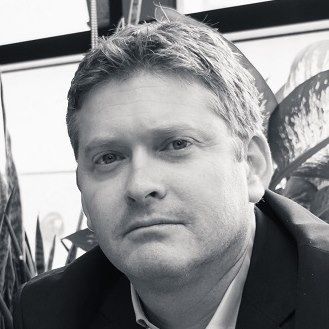Page 10874
Jun 6, 2016
Russian billionaire Mikhail Fridman’s investment vehicle LetterOne launches health business in US
Posted by Karen Hurst in categories: business, health
Nice.
LetterOne, the investment vehicle owned by Russian tycoon Mikhail Fridman, has launched L1 Health in the US and appointed Diageo chairman Dr Franz Humer to the firm’s advisory board.
L1 Health will target up to $3bn (£2.1bn) of investments in the global healthcare sector over the next three years “with the goal of making sizeable equity investments in businesses that it can support and help grow for significant periods of time”, the group said.
Jun 6, 2016
Why Switzerland’s basic income idea is not crazy — By Scott Santens | Politico
Posted by Odette Bohr Dienel in categories: economics, governance, government

Activists pose on top of a giant poster reading “What would you do if your income was taken care of?”, setting the Guinness World Record for the largest poster ever printed, on May 14, 2016 in Plainpalais place in Geneva. A campaign group backing an unconditional minimum income in Switzerland set a Guinness Record for the world’s largest poster on May 14, seeking to rally support for the controversial idea ahead of a referendum next month. The record breaking 8,115 square metre (87,350 square feet) poster was made with a series of massive black plastic sheets, with the words “What would you do if your income was taken of” written in gold lettering. (FABRICE COFFRINI/AFP/Getty Images)
“Seven out of 10 voters fully expect another referendum in Switzerland, and the beginning of a necessary national conversation.”
Tag: Basic income
Jun 6, 2016
Medtronic launches virtual reality app for stents using Google Cardboard
Posted by Karen Hurst in categories: augmented reality, biotech/medical, evolution, virtual reality
Just more proof of the evolution of tech.
http://www.imedicalapps.com/2016/06/medtronic-virtual-realit…ardboard/#
Medtronic has launched the Aortic AR app, a virtual reality medical app for their abdominal aortic aneurysm repair stent.
Continue reading “Medtronic launches virtual reality app for stents using Google Cardboard” »
Jun 6, 2016
China’s New Generation Sets Its Sights on Israel
Posted by Karen Hurst in categories: economics, innovation
A new wave of Chinese outbound investment has arrived in Israel, led by a younger generation of Chinese investors and entrepreneurs. This generation is more technology savvy than its predecessors, more focused on innovation, and will have a deep and lasting impact on Israel’s startup ecosystem.
Earlier waves of Chinese international investment were focused on manufacturing, natural resources and infrastructure. They were dominated by state-backed enterprises targeting large-scale projects and companies, often in Africa and frontier economies. Now, with outbound investment led by entrepreneurial investors who are digital natives, the emphasis is changing, and that is where Israel stands to benefit.
This generation is characterized by technology pioneers such as Alibaba, Baidu, Huawei, Kuang-Chi and Xiaomi, among the world’s most successful tech companies, on par with Western counterparts such as Amazon, Cisco and Samsung. What they see in Israel is an unmatched opportunity to learn and benefit from the unique Israeli technology ecosystem that is fast, dynamic, and lean.
Continue reading “China’s New Generation Sets Its Sights on Israel” »
Jun 6, 2016
Meta-lens works in the visible spectrum, sees smaller than a wavelength of light
Posted by Karen Hurst in category: nanotechnology
Curved lenses, like those in cameras or telescopes, are stacked in order to reduce distortions and resolve a clear image. That’s why high-power microscopes are so big and telephoto lenses so long.
While lens technology has come a long way, it is still difficult to make a compact and thin lens (rub a finger over the back of a cellphone and you’ll get a sense of how difficult). But what if you could replace those stacks with a single flat—or planar—lens?
Researchers from the Harvard John A. Paulson School of Engineering and Applied Sciences (SEAS) have demonstrated the first planar lens that works with high efficiency within the visible spectrum of light—covering the whole range of colors from red to blue. The lens can resolve nanoscale features separated by distances smaller than the wavelength of light. It uses an ultrathin array of tiny waveguides, known as a metasurface, which bends light as it passes through, similar to a curved lens.
Jun 6, 2016
Scientists build gene circuits capable of complex computation
Posted by Karen Hurst in category: biological
BOSTON, June 3 (UPI) — Until now, synthetic biological systems have focused exclusively on either analog or digital computation. Researchers at MIT have devised a technique for creating cellular gene circuits capable of complex computation.
Analog computation, also called continuous computation, is the type of processing happening as the human eye adjusts to changing light conditions. Digital computation involves binary decision making, on or off processes.
The new synthetic cellular circuitry designed by MIT scientists performs like a comparator, receiving analog input signals and converting them into digital output signals.
Continue reading “Scientists build gene circuits capable of complex computation” »
Jun 6, 2016
Future fighter pilot training may include brain surgery
Posted by Karen Hurst in categories: biotech/medical, military, neuroscience
Researchers from the University of Melbourne are developing a minimally invasive brain-machine interface that DARPA hopes to use in fighter jets.
Jun 6, 2016
Applications of Nanoparticle Tracking Analysis in Nanomedicine
Posted by Karen Hurst in categories: nanotechnology, quantum physics
Since 2001, I have worked, experimented, and researched in parallel tech and bio/medical technology space. I did this because I could see that at some point that these two fields would eventually overlap and eventually merge in many areas. Today, we’re already see the duplicated use of technology in both the medical/ life sciences and the same technology used to advance the technology in general such as Quantum tech, nanotech, etc. Here is another example of this trend.
Sponsored Content by Malvern Instruments Ltd
Introduction
Continue reading “Applications of Nanoparticle Tracking Analysis in Nanomedicine” »
Jun 6, 2016
Tiny lasers on silicon means big things for electronics
Posted by Karen Hurst in categories: computing, electronics, nanotechnology, quantum physics, solar power, sustainability
Silicon forms the basis of everything from solar cells to the integrated circuits at the heart of our modern electronic gadgets. However the laser, one of the most ubiquitous of all electronic devices today, has long been one component unable to be successfully replicated in this material. Now researchers have found a way to create microscopically-small lasers directly from silicon, unlocking the possibilities of direct integration of photonics on silicon and taking a significant step towards light-based computers.
Whilst there has been a range of microminiature lasers incorporated directly into silicon over the years, including melding germanium-tin lasers with a silicon substrate and using gallium-arsenide (GaAs) to grow laser nanowires, these methods have involved compromise. With the new method, though, an international team of researchers has integrated sub-wavelength cavities, the basic components of their minuscule lasers, directly onto the silicon itself.
To help achieve this, a team of collaborating scientists from Hong Kong University of Science and Technology, the University of California, Santa Barbara, Sandia National Laboratories and Harvard University, first had to find a way to refine silicon crystal lattices so that their inherent defects were reduced significantly enough to match the smooth properties found in GaAs substrate lasers. They did this by etching nano-patterns directly onto the silicon to confine the defects and ensure the necessary quantum confinement of electrons within quantum dots grown on this template.















